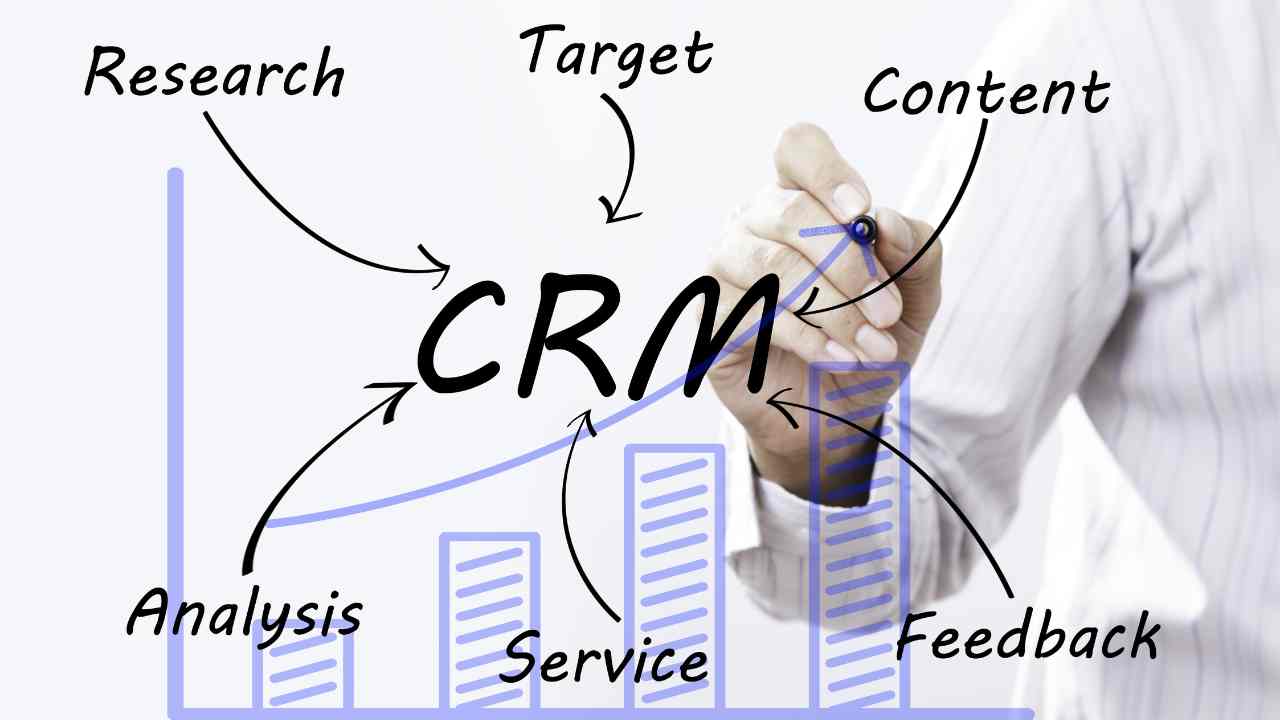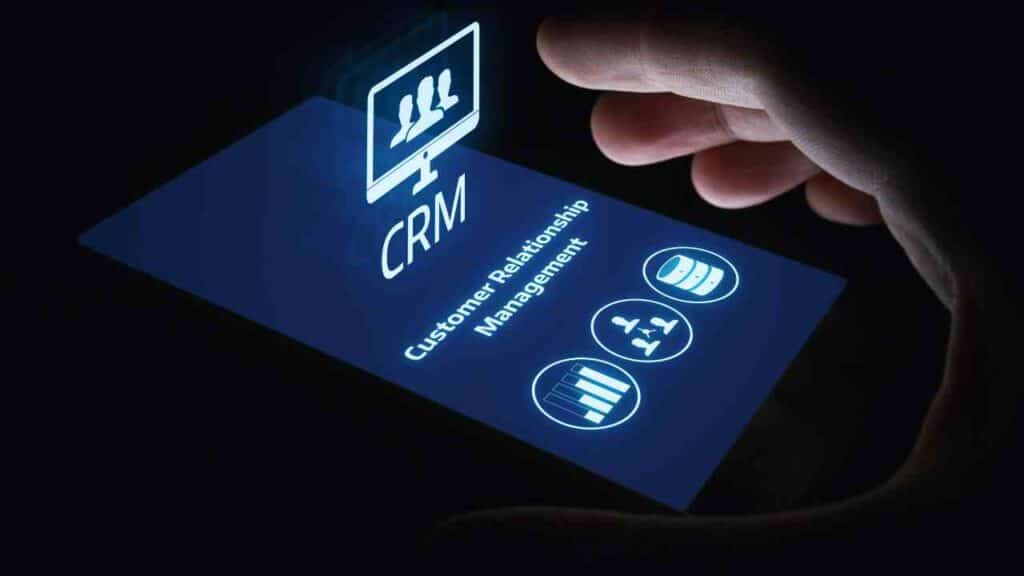Creating a Customer-Centric CRM Environment

In today’s highly competitive business landscape, customer relationship management (CRM) has become a crucial aspect of success. A customer-centric CRM environment is essential for businesses to effectively manage their relationships with customers, understand their needs, and provide personalized experiences. In this article, we will explore the key elements of creating a customer-centric CRM environment and how it can benefit businesses.
The Importance of Customer-Centricity
Customer-centricity refers to the approach of putting the customer at the center of all business activities. It involves understanding customer needs, preferences, and behaviors to deliver personalized experiences and build long-term relationships. A customer-centric CRM environment enables businesses to:
- Gain a deeper understanding of customers
- Anticipate customer needs and preferences
- Deliver personalized experiences
- Build long-term customer relationships
- Improve customer satisfaction and loyalty
By focusing on the customer, businesses can differentiate themselves from competitors and create a sustainable competitive advantage.
Key Elements of a Customer-Centric CRM Environment
Creating a customer-centric CRM environment requires a combination of technology, processes, and a customer-focused culture. Let’s explore the key elements:
1. Integrated CRM System
An integrated CRM system is the foundation of a customer-centric environment. It allows businesses to consolidate customer data from various touchpoints and departments into a single, unified view. This enables a holistic understanding of the customer and facilitates personalized interactions. A comprehensive CRM system should include features such as:
- Contact management
- Sales and opportunity management
- Marketing automation
- Customer service and support
- Analytics and reporting
By having all customer-related information in one place, businesses can provide a seamless experience across different touchpoints and departments.
2. Data-Driven Insights
Data-driven insights play a crucial role in understanding customer behavior and preferences. By analyzing customer data, businesses can identify patterns, trends, and opportunities for personalized interactions. This requires leveraging advanced analytics tools and techniques to extract meaningful insights from large volumes of data. Some examples of data-driven insights include:
- Segmentation: Dividing customers into distinct groups based on characteristics such as demographics, behavior, or preferences.
- Personalization: Tailoring marketing messages, product recommendations, and offers based on individual customer preferences.
- Churn prediction: Identifying customers who are at risk of leaving and taking proactive measures to retain them.
- Upsell and cross-sell opportunities: Identifying opportunities to offer additional products or services to existing customers.
By leveraging data-driven insights, businesses can deliver relevant and timely experiences that resonate with customers.
3. Customer Journey Mapping
Customer journey mapping involves visualizing and understanding the end-to-end customer experience across different touchpoints and channels. It helps businesses identify pain points, gaps, and opportunities for improvement. By mapping the customer journey, businesses can:
- Identify touchpoints where customers interact with the business
- Understand customer expectations and emotions at each touchpoint
- Identify areas for improvement and optimization
- Align internal processes and departments to deliver a seamless experience
Customer journey mapping enables businesses to identify opportunities for personalization and deliver a consistent experience across all touchpoints.
4. Customer-Focused Culture
A customer-centric CRM environment requires a culture that prioritizes the customer. This involves fostering a customer-focused mindset among employees and aligning their goals and incentives with customer satisfaction and loyalty. Some key aspects of a customer-focused culture include:
- Empathy: Encouraging employees to understand and empathize with customer needs and challenges.
- Collaboration: Promoting cross-functional collaboration to deliver a seamless customer experience.
- Continuous learning: Encouraging employees to stay updated with customer trends and preferences.
- Customer feedback: Actively seeking and incorporating customer feedback to drive improvements.
A customer-focused culture ensures that all employees are aligned towards delivering exceptional customer experiences.
Benefits of a Customer-Centric CRM Environment
Implementing a customer-centric CRM environment can yield several benefits for businesses:
1. Improved Customer Satisfaction and Loyalty
By understanding customer needs and preferences, businesses can deliver personalized experiences that exceed customer expectations. This leads to higher customer satisfaction and loyalty, resulting in repeat business and positive word-of-mouth referrals.
2. Increased Sales and Revenue
A customer-centric CRM environment enables businesses to identify upsell and cross-sell opportunities. By offering relevant products or services to existing customers, businesses can increase their average order value and overall revenue.
3. Enhanced Efficiency and Productivity
By having a unified view of customer data and streamlined processes, businesses can improve efficiency and productivity. This reduces manual tasks, eliminates duplicate efforts, and enables employees to focus on value-added activities.
4. Competitive Advantage
A customer-centric CRM environment differentiates businesses from competitors. By delivering personalized experiences and building strong customer relationships, businesses can create a sustainable competitive advantage that is difficult for competitors to replicate.
Case Study: SaasExpert.ca
SaasExpert.ca is an all-in-one sales and marketing platform designed for small businesses, agency owners, and marketers. It provides a customer-centric CRM environment that helps businesses effectively manage their customer relationships and drive growth.
With SaasExpert.ca, businesses can:
- Consolidate customer data from various touchpoints into a single, unified view
- Gain data-driven insights to understand customer behavior and preferences
- Map the customer journey to identify pain points and opportunities for improvement
- Foster a customer-focused culture through collaboration and continuous learning
By leveraging SaasExpert.ca, businesses can create a customer-centric CRM environment that drives customer satisfaction, loyalty, and revenue growth.
Get Your FREE 14-Day Trial and Take Your Business To The Next Level with an All-In-One Sales and Marketing Platform for businesses, agencies and marketers.
A customer-centric CRM environment is essential for businesses to effectively manage their relationships with customers and deliver personalized experiences. By integrating a comprehensive CRM system, leveraging data-driven insights, mapping the customer journey, and fostering a customer-focused culture, businesses can gain a competitive advantage and drive growth. SaasExpert.ca provides an all-in-one sales and marketing platform that enables businesses to create a customer-centric CRM environment. Embracing customer-centricity is no longer an option but a necessity for businesses to thrive in today’s competitive landscape.
Visit SaasExpert.ca – Your All-In-One Sales and Marketing Platform for small businesses, agency owners, and marketers.
Learn more about the “Techniques for Developing Customer Centric Approach with CRM” right here.
Frequently asked questions about Creating a Customer-Centric CRM Environment.

How Do You Create a Customer-Centric CRM Environment? 🤔
Creating a Customer-Centric CRM (Customer Relationship Management) environment is like throwing a party where the guest of honor is your customer 🥳. In a customer-centric model, every decision, feature, and interaction revolves around the customer’s needs, expectations, and satisfaction.
Step one: Know Your Customer 🎯. Collect and store relevant information about customer preferences, history, and behavior. But remember, it’s not just data collection; it’s about gaining insights to improve the customer experience. Tools like data analytics can help you sift through the mountain of information and make data-driven decisions.
Step two: Communication is Key 🗨️. Whether it’s email, social media, or good old-fashioned phone calls, utilize every channel to engage with your customer. Your CRM system should make this easy by integrating with various communication platforms and tracking all interactions.
Step three: Personalization 👩💻. Generic messages are out; personalized experiences are in. Imagine if a friend gave everyone the same birthday card year after year 🙄. It would feel a bit impersonal, right? The same goes for customer interactions. Use your CRM to set up automated but personalized messages, offers, and interactions based on customer behavior and preferences.
Step four: Feedback Loops 🔄. You can’t improve what you don’t measure. Feedback, whether through customer surveys, social listening, or direct interactions, provides invaluable insights. Ensure your CRM has capabilities for collecting and analyzing this feedback.
Step five: Continual Improvement 🌱. Building a customer-centric CRM environment isn’t a one-time job; it’s an ongoing process. Continue to adapt and evolve based on customer feedback and data analytics.
By following these steps, you not only satisfy your existing customers but also attract new ones because, let’s face it, who wouldn’t want to be a part of a party that’s all about them? 🎉
What are the Essential Features for a Customer-Centric CRM? 🛠️
A good customer-centric CRM is like a Swiss Army knife: versatile, efficient, and indispensable 🔪. Here are some must-have features:
Contact Management 📇: A basic yet essential feature. Store all customer-related information in a single, easily accessible platform.
Multi-Channel Support 🌐: A customer-centric CRM should integrate easily with email, social media, live chat, and even phone. Customers should be able to reach you through their preferred channels.
Data Analytics 📊: What’s the point of collecting data if you’re not going to analyze it? Features for data analytics help you understand customer behaviors and preferences, enabling you to make informed decisions.
Automated Workflows ⚙️: Automation saves time and ensures a consistent customer experience. For example, automated emails for cart abandonment can increase chances of a completed purchase.
Personalization 👓: Features that allow for personalized messages, offers, and experiences based on customer data.
Remember, the best CRM system doesn’t just store information; it serves as a robust tool that enhances customer relationships and drives business growth 📈.
How Can You Use Data Analytics to Enhance Customer Experience? 📈
Data analytics in a customer-centric CRM is like your organization’s magic crystal ball 🔮. It provides you with insights into customer behavior, preferences, and trends, helping you make data-driven decisions that can significantly improve the customer experience.
Predictive Analytics 🤖: Imagine knowing what your customer wants before they even tell you. Predictive analytics can forecast customer behavior, helping you anticipate their needs and meet them proactively.
Customer Segmentation 👥: Not all customers are the same, so why treat them that way? Data analytics can segment your customers into different categories based on their behaviors and preferences, allowing for more targeted and effective marketing strategies.
Customer Journey Mapping 🗺️: From the first click to the final purchase, analytics can track the entire customer journey. This gives you invaluable insights into where they engage, drop off, or face issues.
Sentiment Analysis 💭: Social listening tools can analyze customer feedback from various channels to gauge their sentiment. Are they happy, frustrated, or indifferent? Knowing this can help you tailor your strategies effectively.
A/B Testing 🔄: Sometimes the smallest changes can have a big impact. A/B testing allows you to compare different strategies to find what works best for your customer base.
In essence, data analytics transforms your CRM from a mere data repository into an insightful, powerful tool that can dramatically enhance customer experience 💡.
How Do You Measure Customer Satisfaction in a Customer-Centric CRM? 🎯
Measuring customer satisfaction in a customer-centric CRM is a bit like taking the pulse of your business health 🌡️. If customers are happy, your business thrives; if not, it’s time for some immediate care.
Net Promoter Score (NPS) 😃: This simple survey can provide powerful insights. Ask your customers, “On a scale of 1-10, how likely are you to recommend our service/product?” Based on the answers, customers are categorized as Promoters, Passives, or Detractors.
Customer Satisfaction Score (CSAT) 👍: Usually sent out after a transaction or interaction, it measures customer satisfaction at specific touchpoints.
Customer Retention Rate 💪: This metric tracks how many customers continue to use your service over a specific time period. High retention usually indicates high satisfaction.
Customer Churn Rate 🏃♂️: The flip side of retention, churn rate tells you how many customers you’re losing. High churn is a red flag 🚩 that you need to investigate.
Lifetime Value (LTV) 💎: A satisfied customer is often a loyal customer. LTV measures the total revenue you can expect from a customer throughout their entire lifecycle.
Qualitative Feedback 📝: Never underestimate the power of open-ended questions and direct feedback. Sometimes numbers can’t capture the nuances of customer sentiment.
By paying attention to these metrics and acting on them, you’re not just measuring numbers, you’re gaining insights into what makes your customers tick, and that’s the crux of a customer-centric CRM 👌.
How Does a Customer-Centric CRM Benefit My Business? 🌟
Think of a Customer-Centric CRM as your business’s best friend 🐕. It’s loyal, provides immense support, and most importantly, helps you grow. Here are some ways it benefits your business:
Increased Customer Satisfaction 😊: Happy customers are loyal customers. By focusing on their needs and expectations, you’re not just making a sale; you’re building a relationship.
Improved Customer Retention 🔄: It costs less to keep an existing customer than to acquire a new one. A customer-centric CRM helps you understand what keeps your customers coming back, reducing churn and increasing retention.
Higher ROI 💰: Implementing a customer-centric CRM might require an initial investment, but the returns are often substantial. With improved satisfaction and retention, you’ll likely see an increase in revenue and profits.
Enhanced Reputation 🌟: A satisfied customer is your best brand ambassador. They’re more likely to recommend your services, leave positive reviews, and share their good experiences on social media.
Streamlined Operations 🏭: A CRM centralizes data, automates workflows, and integrates various business functions. This not only improves customer relations but also makes your operations more efficient.
Data-Driven Decisions 🎯: With access to real-time data and analytics, you can make informed decisions that are aligned with customer needs and preferences.
So there you have it, investing in a customer-centric CRM is not just a business strategy; it’s a long-term commitment to your most valuable asset: your customers 💖.







